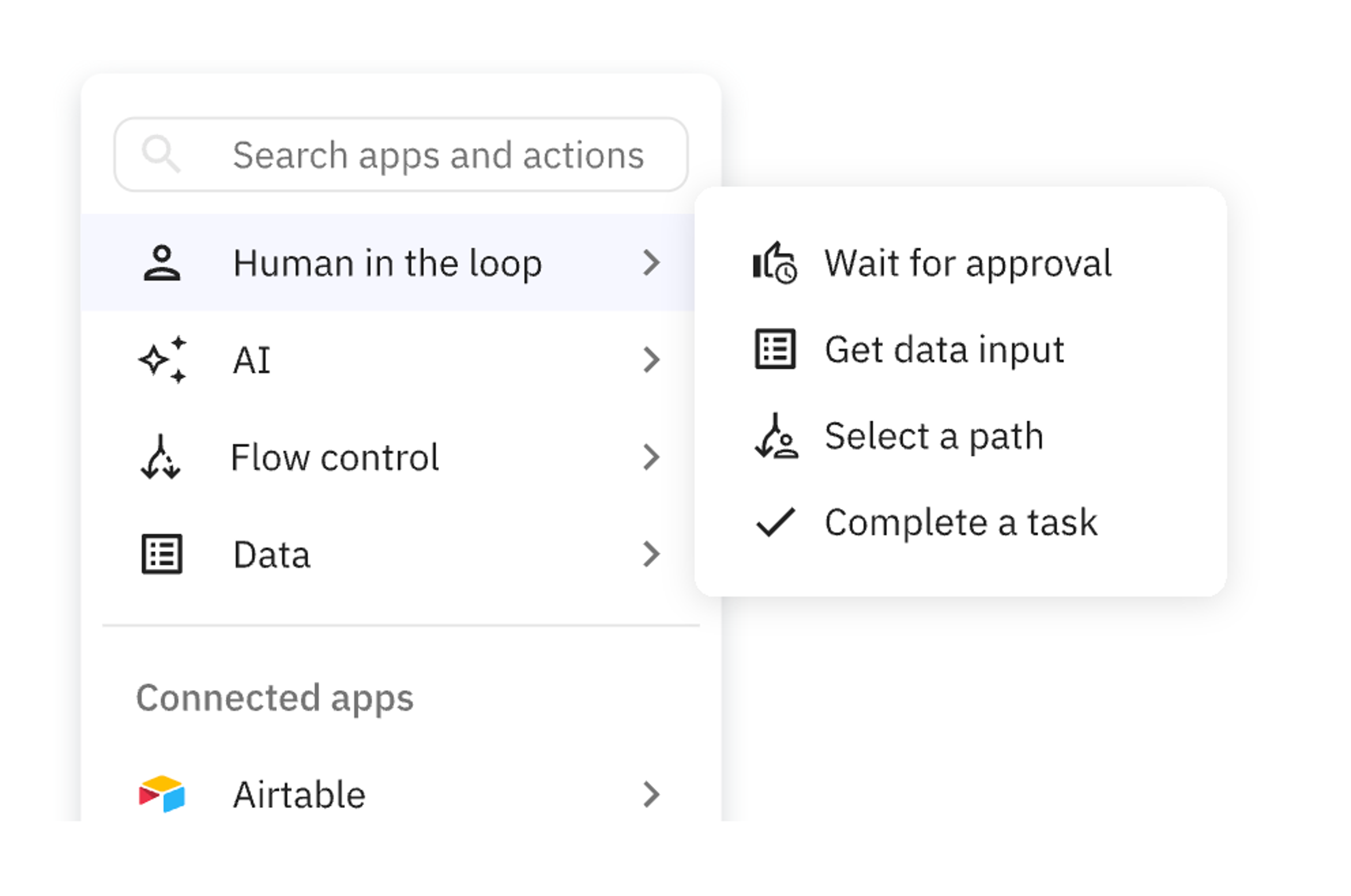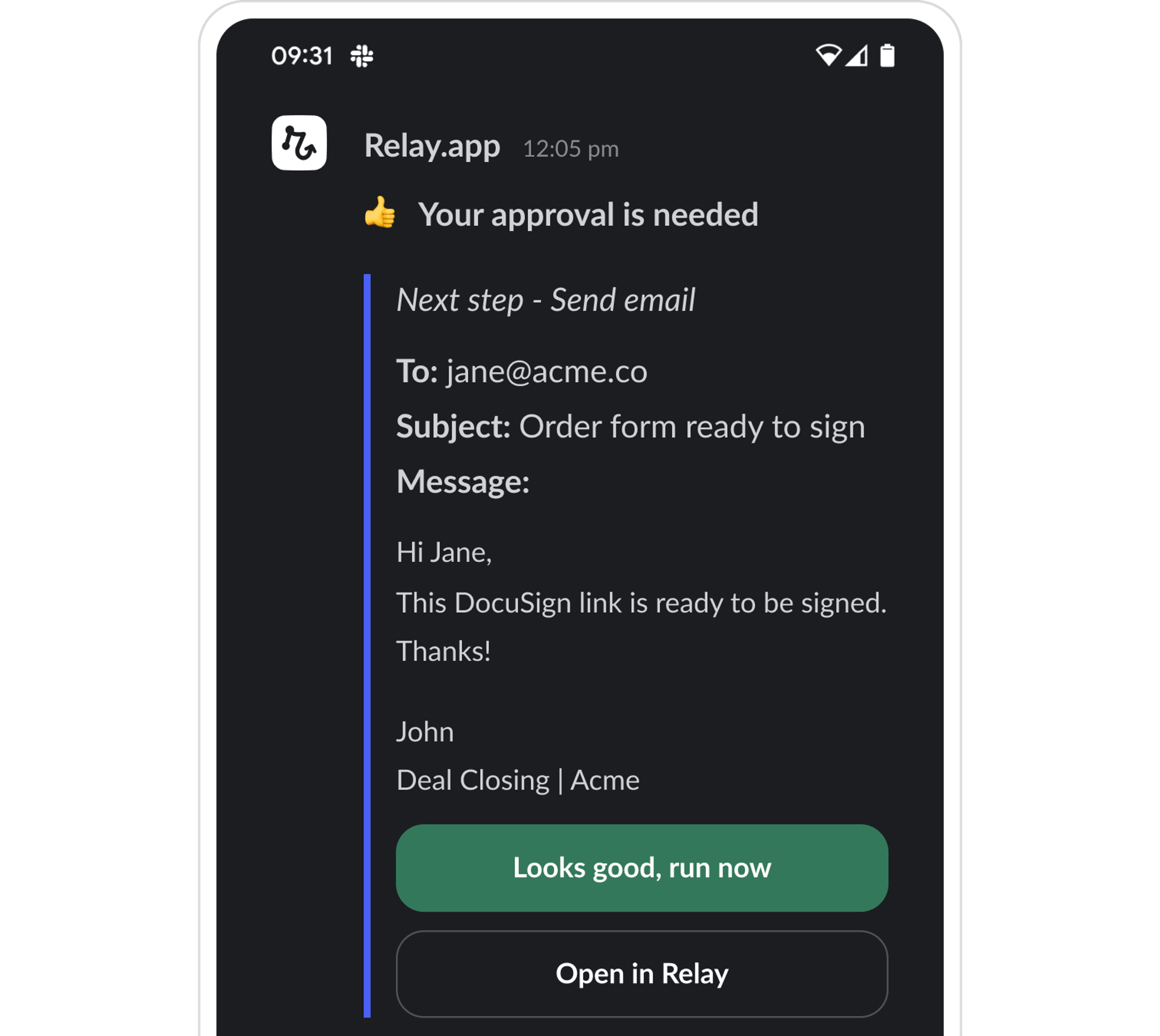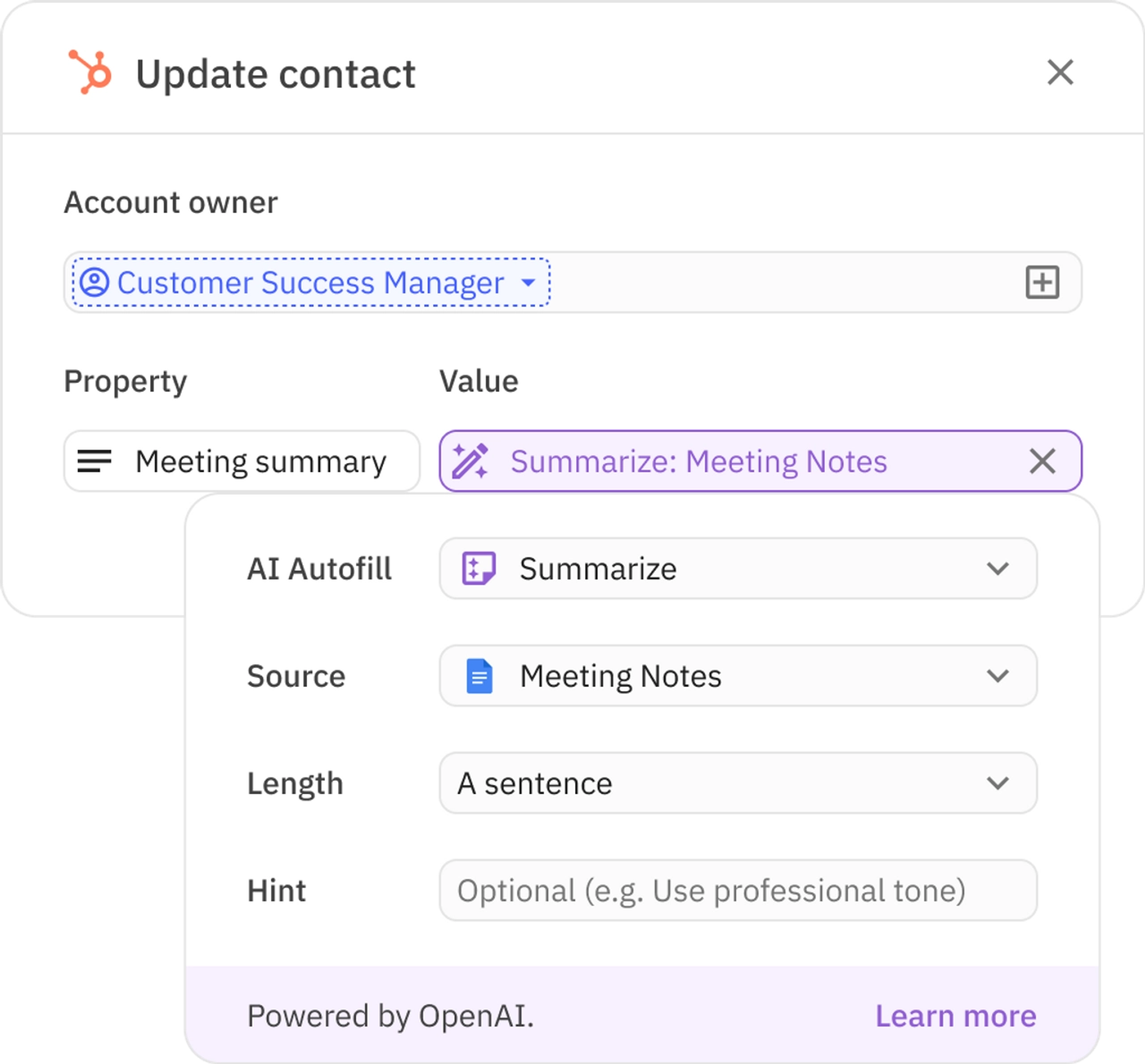
Pipedrive Automations is a nifty addition to Pipedrive’s functionality set and a great option for automating basic sales processes.
However, if you need more advanced automation with more capabilities and comprehensive features, you’ve probably quickly realized that Pipedrive Automations simply can’t get the job done.
In this in-depth review, we’ll break down the 10 best Pipedrive Automations alternatives, deep-diving into their core features, limitations, use cases, and more - so you don’t have to do all the research on your own.
Our team made sure that you’ll get a 360-degree view of every Pipedrive Automations alternative by:
- Using some of the software on the list.
- Interviewing real users of each platform to get a firm grasp of their pros, cons, and overall user experience.
Before we get to the juicy bits, let’s look into Pipedrive Automations’ key limitations.
Why Do You Need a Pipedrive Automations Alternative in the First Place?
We noticed shortcomings when testing Pipedrive Automations, such as a lack of AI-driven features that people now expect from CRM-related workflows.
Users also cite product limitations as reasons for switching to a Pipedrive Automations alternative.
Here are the things our team and other users found to be the most prominent issues:
1. Limited use cases
Pipedrive is a Customer Relationship Management (aka CRM) software solution primarily used by sales teams for managing sales activities.
As such, Pipedrive Automations provides sales automation alone, meaning it can only automate parts of your sales pipeline, such as drip campaigns, deal management flows, and similar sales processes.
However, if you need more than just sales automation, Pipedrive Automations can’t deliver.

Also, being a CRM tool, Pipedrive Automations doesn’t allow for automating any other apps besides Pipedrive’s workflows.
This is a major deal-breaker if you need to automate multiple apps through a single platform.
The only thing you can set up in other apps is Slack or Microsoft Teams notifications as part of your automated sales processes (e.g., get alerted when a deal is created or updated, etc.).
2. No AI-driven automation capabilities
Pipedrive does include AI-powered features in its general offering.
However, its sales automation service has not been enhanced by AI, which is a significant downside given that most workflow automation platforms have at least some kind of AI-driven suite of tools.
Of course, Pipedrive’s AI assistant can help increase your overall business productivity and enhance sales pipeline management, as it can summarize emails, for example.
💡Keep in mind, though, that AI features are available only on the Professional plan and above.
3. Clunky interface
Some customers complain about Pipedrive’s interface being unintuitive, causing problems for the less tech-savvy users.

Also, some of its smoother features—including automations—are gated for top-tier users only, making it a far from optimal choice if you’re on a budget.
💡Note: This is subjective, and you might not expect the same experience from Pipedrive’s traditional sales capabilities and automation features, which aren’t as developed.
Top 10 Pipedrive Automations Alternatives
We selected the 10 best Pipedrive Automations Alternatives based on their capabilities and use cases, ensuring everyone can find their perfect match.
They include the following:
- Relay.app - Keeps humans in the workflow automation loop
- Zapier - Versatile platform with numerous integrations
- Workato - End-to-end automation for IT teams
- Kissflow - Enterprise-scale team collaboration on workflows
- Pipedream - Low-code automation platform geared at developers
- IFTTT - Simple automation for people using social media platforms for sales and marketing
- Nekton.ai - AI-driven automation of simple tasks
- Albato - No-code automation solution that allows for creating custom integrations
- Make - Feature-rich, no-code automation platform
- Integrately - 1-click automations of simpler, repetitive tasks
1. Relay.app

Relay.app is a no-code automation platform that provides users with the best of both worlds, as it:
- Enables streamlining and automating workflows of various complexity, boosting productivity and business efficiency
- Allows adding human-managed steps into workflows whenever necessary (e.g., when you need more personalization, human insight, judgment, etc.)
As a result, users won’t have to choose between the benefits of automation and keeping the human touch, which is irreplaceable in certain instances.
Relay.app also boasts a wide range of functionality - including iterators, conditional logic, path merging, bulk triggers, and more - making it the perfect all-in-one solution for users with various automation needs and skill levels. Here's an example in Pipedrive:
Let’s dig into the exact features that make Relay.app a great alternative to Pipedrive Automations for users needing more complex automations. ⤵️
Feature 1: Human-in-the-Loop
As its name implies, the Human-in-the-Loop feature enables you to include actual people in specific workflow steps that require human attention.
Namely, no technology can simulate human creativity, contextual awareness, and genuine human experience, which are all crucial traits for handling more delicate tasks.
The Human-in-the-Loop feature lets you precisely manage such tasks without completely giving up on automation.

There are four distinct Human-in-the-Loop functionalities to allow for creating as many different workflow scenarios as you may need:
- Approvals—Have a competent team member, such as a senior manager, approve a certain task before the workflow continues. This allows for more control and includes human judgment in sensitive processes (e.g., contracts, invoice forms, etc.).
- Data Inputs—Use this when you need to add data manually instead of letting the automation fill in the blanks. For instance, you can have your marketing reps personalize emails for each lead, or sales reps manually add notes regarding importing meetings, etc.
- Decisions—Relay.app’s conditional logic allows you to create automated branching paths. However, in some cases, you’ll want a human to make the final call and choose between Path A and Path B based on their situation assessment.
- Tasks—Assign a team member to complete an action in the real world before the automated flow continues. This could include anything from drafting a contract to making a custom client form.
The Human-in-the-Loop is also very easy to set up.
Once you include one of these human-handled steps, the person assigned to the task will be notified via email or Slack when the workflow reaches that step.
The automation will pause until the person completes the task and proceed immediately after completion.
Try it out for yourself:
Why Is the Human-in-the-Loop Feature so Important?
Most workflow automation tools only allow you to create fully automated workflows.
This means that while you’ll gain in efficiency and productivity, you’ll inevitably lose the human touch, which can be invaluable in some cases.
Being aware of this problem, our team decided to create an opportunity for users to enjoy both the benefits of streamlined business processes and all the irreplaceable human traits.
As a result, Relay.app’s users can save time on repetitive tasks and be more efficient across levels while at the same time:
- Stay in charge of sensitive processes
- Personalize workflows (e.g., outreach campaigns, client communication, etc.)
- Apply human judgment and creativity to tasks that require special attention, etc.

With this crucial feature, you can finally say goodbye to generic, cookie-cutter workflows and unlock the full potential of automation and human creativity combined.

Feature 2: 1-Click AI Assistance
Unlike Pipedrive Automations, Relay.app has a set of built-in AI tools that can be applied to workflows whenever they are contextually relevant.
With them, you can easily handle a variety of repetitive tasks, such as:
- Summarize emails and meeting notes
- Autofill in-context sentences and entire paragraphs in different content types (e.g., emails)
- Detect and fix workflow errors, etc.

The best part about Relay.app’s AI capabilities is that you don’t need any prompt engineering skills or experience.
As you can see below, they can be activated with one click whenever they fit into your workflow.
Feature 3: Collaborative Workflows
This feature is one of the main reasons why so many teams opt for Relay.app as their preferred automation solution.
Many projects and workflows require teamwork to be managed and completed with optimal results, which is why options for workflow collaboration are a must-have.
Relay.app enables users to create multiplayer automations of various complexity, allowing easy task allocation.

This is done via dynamic role assignment, which pulls relevant data from the apps you connected with Relay.app, ensuring that a specific task is delegated to the right person (e.g., an account-related task will be assigned to the appropriate Account Manager based on the data from your CRM).
As a result, you’ll be able to keep the whole team on the same page and ensure that the most appropriate person handles or monitors every part of the workflow.
Try creating a role to see how easy it is ⤵️
Relay.app Integrations
Relay.app is a relatively new automation platform, meaning that it doesn’t have as many integrations as some of the more seasoned solutions on our list.
However, it integrates with all the apps that are most commonly used and requested by most users, such as Jira, Google Suite, Lemlist, Asana, Pipedrive itself, and many others.

Most importantly, all Relay.app integrations are seamlessly deployed and supported across workflows, with new apps being added regularly.
Pricing
Relay.app lets you run 200 automations for free, including access to all its capabilities.
If you need more than that, you can pick one of the three paid plans:
- Professional: $9 per month (2 user seats included, 10k automations/month)
- Team: $59 per month (unlimited user seats, 25k automations/month)
- Enterprise: Custom pricing for larger users requiring unlimited automations and user seats, in addition to custom integrations

Unlike most workflow automation tools, Relay.app doesn’t keep its best features and premium integrations behind a high paywall.
You get access to all of Relay.app’s functionality regardless of the plan you subscribe to.
This allows users of all sizes and budgets to find a plan that fits their automation needs to a T.
How Does Relay.app Compare to Pipedrive Automations?

As we mentioned initially, Pipedrive Automations can automate exclusively Pipedrive workflows.
On the other hand, Relay.app is a comprehensive workflow automation solution that can automate any app you integrate with it with equal ease and efficiency.
That means that for the price of one automation platform, you can automate a wide variety of apps you use daily.
In contrast to Pipedrive Automations rather basic features, Relay.app has a broad range of advanced capabilities that allow for creating intricate workflows of various complexity.
Moreover, Relay.app’s enables users to automate virtually any scenario without being limited to sales workflows alone, as with Pipedrive Automations.
Ultimately, Pipedrive Automations is a better choice than Relay.app if you’re looking to automate just Pipedrive, as it would be a more economical solution in that case alone.
When it comes to automating workflows beyond Pipedrive, Relay.app is a definitive winner.
Pros and cons
✅ Comprehensive features that allow for creating various workflow scenarios.
✅ Enables automating a vast range of apps.
✅ Allows for more personalization, customization, and control of workflows.
✅ Transparent pricing with access to all its features across tiers.
❌ Less integrations than some other tools on the list.
2. Zapier

Zapier is one of the first workflow automation software to appear in the market.
It’s popular among users primarily for its vast integration library and intuitive workflow builder.
Features
- Visual drag-and-drop workflow builder.
- Depository of ready-made customizable templates that can be tweaked to suit specific needs better.
- Conversational AI-powered automation builder that allows for creating workflows by explaining what you need in natural language.
Pricing
Zapier has a free-forever plan that allows you to create two-step workflows and includes limited access to its app integrations.
If you want premium integrations, multi-step workflows, and access to more advanced features, you can choose between 3 pricing plans:
- Professional: Starting from $29.99
- Team: Starting from $103.50
- Enterprise: Custom pricing

Each Zapier’s plan includes a limited number of tasks. Once that limit is exceeded, you’ll have to pay extra.

Also, its more powerful features are included in higher-tier plans alone.
Consequently, Zapier can turn out to be a very expensive solution, especially for larger businesses and more advanced users.
Pros and cons
✅ More than 7,000 app integrations.
✅ Intuitive workflow builder.
❌ Expensive at scale.
3. Workato

Workato is an end-to-end automation solution designed for IT teams or larger businesses with the technical capacity to master it.
Features
- Includes an option for creating custom connectors through its SDK platform, in addition to having pre-built integrations. However, to use it, you need coding expertise.
- Community library of pre-built automations called “Recipes,” where users share their automations with others.
- AI-powered tools that help with creating and customizing workflows.
Pricing
Unfortunately, Workato doesn’t offer free trials or free forever plans, meaning you’ll have to pay for it from the get-go.
Another potential issue is that Workato’s pricing structure is not publicly available. The website only states that each Workato workspace gets unlimited users and automations.

You’ll have to contact Workato’s team directly and request a quote for more details.
Pros and cons
✅ Integrates with more DevOps and IT apps than most other tools.
✅ Has many customization options for users with coding expertise.
❌ Can’t be used at its maximum capacity by non-developers.
❌ Steep learning curve.
4. Kissflow

Kissflow is a low-code to no-code platform that enables collaborative task management and automation.
Features
- Advanced reporting and analytics that provide actionable insights and allow for making data-driven decisions.
- Visual workflow builder.
- Collaborative features such as role assignment and permit configuration allow control over who accesses which part of the workflow.
Pricing
Kissflow doesn’t offer free plans or trials, so you’ll have to choose between one of the two paid plans from the start:
- Basic: Starts at $1,500
- Enterprise: Custom-tailored pricing

Pros and cons
✅ User-friendly interface.
✅ Enables teamwork at scale.
❌ On the more expensive end of the range.
5. Pipedream

Pipedream is a low-code automation solution built to help developers increase productivity and efficiency by streamlining various processes.
Features
- Access to npm and PyPI packages, enabling skilled developers to become full-stack engineers via one platform alone.
- Options for creating custom integrations through its low-code interface.
- AI workflow builder that creates workflows based on instructions given in plain English.
Pricing
Pipedream has a free forever plan with up to 300 monthly credits and a 10-credit daily limit.
As you can see, Pipedream’s pricing structure is unique in introducing the concept of “credits.”
As stated on Pipedream’s website: “One credit is charged per 30 seconds of compute time with 256MB of memory, with a minimum of 1 credit per workflow execution.”
Understanding credits is crucial because each of Pipedream’s plans includes a certain number of them. If you exceed the limit, you’ll pay extra.
You can pick one of three tiers:
- Basic Plan: $45 per month
- Advanced Plan: $74 per month
- Enterprise Plan: Custom pricing

Again, remember that these are just the starting prices - the final cost will depend on the number of credits you need.
Pros and cons
✅ Rich customization options for developers.
✅ 2,000+ seamless integrations, with many apps primarily built for developers and technical users.
❌ Steep learning curve that makes it useless for all but developers or users with coding proficiency.
6. IFTTT

IFTTT enables simple home and business automation, which makes it a nifty tool for automating smart homes and devices, social media platforms, lifestyle apps, and more.
Features
- Has a no-code mobile app included in all its plans.
- Has an AI-powered content generator that can be used for blogs, social media posts, etc., making it one of the more popular tools for smaller marketing teams.
- Offers pre-made customizable templates.
Pricing
IFTTT's free forever plan provides limited access to its key features (e.g., you get just two Applets, only the simplest integrations, etc.).
When it comes to its paid plans, there are two to choose between:
- Pro at 2.92 per month
- Pro+ at 12.50 per month

Pros and cons
✅ Very easy to use.
✅ Great choice if social media is your primary sales or marketing channel due to its versatile options for automating this type of apps.
❌ Enables only the simplest automations.
7. Nekton.ai

Nekton.ai allows users to create automated workflows through its conversational AI workflow builder.
All you need to do is explain what kind of automation you need in plain English, and Nekton.ai will deliver.
Features
- Excellent for automating very specific small tasks.
- Integrates with a solid number of business apps.
Pricing
Nekton.ai has a free-forever plan that provides 300 automations (“flows”).
For users requiring more, there are two paid plans:
- Starter Plan: $9 per month, with 1000 flows
- Pro Plan: $18 per month, with 5000 flows

Pros and cons
✅ Simple, clean interface powered by OpenAI and ChatGPT.
✅ Affordable pricing plans.
❌ Cannot automate complex and intricate tasks.
8. Albato

Albato is a no-code automation platform with comprehensive integration capabilities.
Features
- App Integrator that allows for creating seamless integrations with custom apps without using code.
- Intuitive interface that enables users to easily create simple “if this, then that” workflows.
- Extensive knowledge base.
Pricing
Albato has a free trial that lets you explore all its functionality for one week and with 500 tasks.
There’s also a free-forever plan that includes 100 tasks and 2-step automations alone.
If you need more automations and more comprehensive features, Albato has five tiers:
- Basic: $19 per month
- Standard: $53 per month
- Pro: $130 per month
- Enterprise: $202 per month
- Custom: A custom plan tailored to specific needs

Pros and cons
✅ Lots of pricing plans to choose from, so different user types are more likely to find their match.
✅ User-friendly interface.
❌ Doesn’t offer extensive features as some other tools on the list, which can be an issue if you need a higher degree of customization.
9. Make

Make is a no-code automation platform with a visual workflow builder that allows users with various skill levels to create the automation they need.
Features
- Options for setting up backup flows in case something goes wrong with the original one.
- Visual workflow builder that lets you create, test, and edit workflows easily.
- Template library with thousands of ready-made automations that can be customized.
Pricing
Make has a free-forever plan with 1,000 monthly tasks.
Its paid plans include:
- Core: $10.59 per month
- Pro: $18.82 per month
- Teams: $34.12 per month
- Enterprise: Custom pricing

However, these are just starting prices, as the final price will depend on your total number of monthly automations.
Pros and cons
✅ Intuitive visual workflow builder.
✅ Versatile features.
❌ Can get very expensive at scale.
10. Integrately

Integrately offers a vast library of pre-built 1-click automations that can be activated within minutes, making basic workflow automation accessible to beginners.
Features
- Integrately AI lets you build custom automations by explaining your needs in English.
- One of the richest depositories of ready-made automations.
Pricing
Integrately offers a free forever plan with 100 tasks and minimal functionalities, which makes it unsuitable for all but the most basic users.
When it comes to its paid plans, there are four to choose from:
- Starter: $29.99 per month
- Professional: $49 per month
- Growth: $124 per month
- Business: $299 per month

Pros and cons
✅ Stellar customer service.
✅ Great for non-technical users with simpler needs who could make the most of its 1-click automations.
❌ Relatively steep learning curve when it comes to building custom workflows.
Build Powerful Automations with Relay.app
We’re confident that one of these automation solutions will turn out to be the perfect Pipedrive Automations alternative for your needs, skill level, and budget.
The best way to narrow down the choice is to try at least some of these platforms yourself.
Set up a few workflows, play around with the features, and see how it feels.
Why not start with Relay.app?
Sign up for Relay.app’s free trial that lets you take all its features on a test ride and start building powerful workflows (like this one) today.

